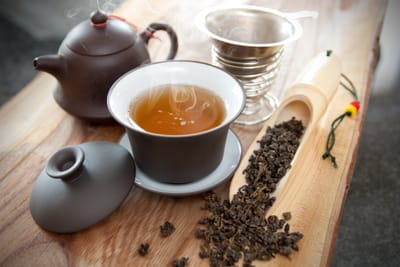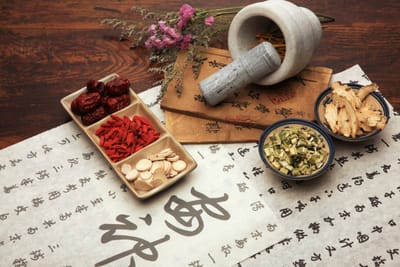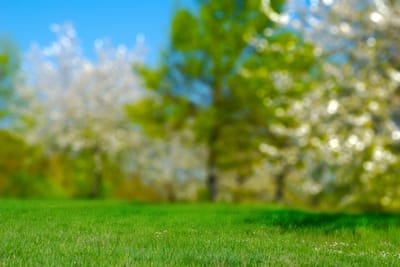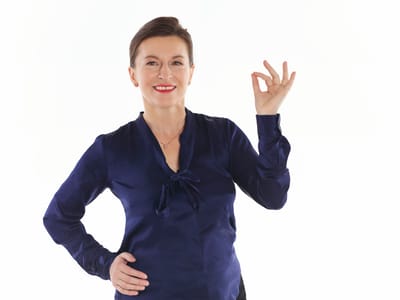Dobra chińska herbata jest mało osiągalna w naszym kraju i dość cenna. W Tradycyjnych Chinach często kosztuje nawet bardzo dużo stąd nie opłaca się za bardzo sprowadzać dla nielicznych smakoszy lub osób znających jej wartości dla zdrowia.
Read MoreJolanta Press Akupunktura
i Chińska Medycyna
Boutique Acupuncture Clinic in the heart of Warsaw
Recover your health naturally
Health Conditions
Health conditions, you can get help with. Heal your illnesses, take yourself back to harmony
Treatment of pain
Chronic pain
Postoperative stress
Fibromyalgia (FMS)
General health
Anxiety/panic attacks
Depression
Immune system
Hypothyroidism / hyperthyroidism
Allergies / sinus problems
Infections
Women's health
Fertility
Pregnancy
Recovery from childbirth
Menopause
Digestive complaints
Constipation / diarrhea / bloating
Abdominal pain / gastrointestinal pain
Krohn's disease
Irritable bowel syndrome / inflammatory bowel disease
Long-term problems
Exhaustion / low energy
Insomnia / sleep disorders
Jolanta Press's acupuncture's benefits
- Generates ongoing improvement with each successive treatment.
- Requires fewer treatments to achieve a stable and lasting improvement.
- Uses fewer acupuncture points to produce instant results.
- Stimulates blood flow.
- Relaxes and re-trains muscles.
- Soothes tense nerves.
- Re-energizes the body’s natural healing system.
About Jolanta Press
A unique natural healthcare clinic in the heart of Warsaw
In her boutique clinic, Jolanta Press integrates ancient wisdom and time-proven techniques of Traditional Chinese Medicine with a deep understanding of the needs of modern life. She supports patients across a wide spectrum of health conditions — effectively, safely, and naturally.
Whether you are struggling with chronic pain, stress, women’s health concerns, digestive disorders, or low energy levels, each therapy is individually tailored. Dr. Jolanta focuses not only on relieving symptoms, but above all on addressing their root causes. This approach allows for lasting results, improved overall health, and a better quality of life.
“My mission is to help people quickly and effectively with health and pain through natural methods.
For many years I have traveled the world and continuously sought knowledge and solutions drawn from the oldest sources of Chinese medicine.
Through acupuncture and Chinese medicine, patients can regain health, balance, and well-being.”
Jolanta Press

Patient's Testimonials
About Jolanta Press, Dipl. ACM, MA
Chinese Medicine Physician, Acupuncturist, Health Cultivation Teacher, Spiritual Advisor

Jolanta Press is a highly regarded specialist in acupuncture and Traditional Chinese Medicine with nearly 20 years of professional experience. She supports patients in Poland and internationally, using natural healing methods rooted in classical, ancient Chinese medical knowledge.
She obtained her education and clinical practice in Chinese medicine at the prestigious China Academy of Chinese Medical Sciences in Beijing, with formal training and specialization in General Chinese Medicine, Acupuncture, Chinese Herbal Medicine, and therapeutic Tuina massage. Her clinical training took place at the university-affiliated WHO Collaborating Institute, where she practiced in departments including internal medicine and neurology. She later continued her advanced studies in private classical Chinese medicine schools in the United States, deepening her expertise and refining her clinical skills.
Jolanta Press has professional experience since 2005, gained through clinical practice in Poland, across Europe, and in the United States. She works with unique oral transmissions passed down through classical, ancient Chinese physicians, which form the foundation of her distinctive therapeutic approach. Her acupuncture is widely recognized for its exceptional effectiveness, setting a high standard within Europe.
She continually deepens her knowledge by studying the oldest classical texts and living oral traditions of Chinese masters. Her treatments are individually tailored and focus both on immediate relief of symptoms and long-term restoration of balance within the body. She integrates acupuncture, Chinese herbal medicine, herbal and botanical essences, and practical lifestyle guidance to support sustainable health outcomes.
Dr. Jolanta Press is known for her empathetic, attentive approach to patient care, creating a calm, safe environment that supports regeneration and the natural healing process.
Beyond her clinical practice, Jolanta Press actively shares her knowledge through workshops, trainings, and seminars. She also teaches ancient practices for health and longevity, including Qi Gong, Daoyin, and meditation, which have been her personal passion and daily practice for over 35 years.
Jolanta Press speaks English, German, and Polish (native).
F.A.Q.
Qigong, Daoyin, Meditation
Free your mind and body - Join our Qigong, Daoyin (Chinese Yoga), Meditation classes - coming soon
Qi Gong is the art of exercising the Jing (essence), Qi (energy), and Shen (spirit). The nucleus of Qi Gong is the exercise of Yi (consciousness) and Qi (vital energy). The main purpose of these exercises is to regulate the internal functions of the human body. Qi Gong does this through developing consciousness and respiration, through causing the internal Qi to manifest in awareness, and through moving and strengthening the internal Qi. The internal Qi is the Qi belonging to the human body itself. Thus, Qi Gong brings self-regulation and self-control to the vital organs.
Daoyin
The traditional Chinese practice of leading (dao) qi (energy) and stretching (yin) the body is the brother of Hindu yoga and a precursor to qigong. Unlike yoga, it focuses on the concept of qi or vital energy. It uses a combination of mind awareness, controlled breathing, and slow physical movements to engage concentration, improve health, and open up your mind. The Daoyin exercises were already described in manuscripts dating back to 200 BC.
Daoyin suggests that deep tranquility, or calm, is a primary healing principle, realised through attentive and careful movements. The two Chinese characters are usually translated as “guiding and inducing” which relates directly to fostering the circulation of vital energy (Qi) and suggests certain attitudes or qualities that we can bring to our practice – precise attention, gentle encouragement, or careful determination – which will augment and guide the Qi in its path.
Daoyin exercises are characterized by continual slow, smooth movement guided by postural principles. So ‘Yin’ can mean “going ahead” or “leading the way”, hence “guidance”; more literally, it can be taken as “pulling”, like pulling something out or along.
Blog
Często obserwuję w swojej praktyce, kiedy diagnoza lekarska czy wynik badania, powodują u wielu pacjentów silny stres, napięcie psychiczne a także w ciele, często nawet ataki paniki.
Read MoreZioła to w medycynie Chińskiej środek zapobiegawczy albo stanowiący oddzielną kurację leczniczą czy uzupełniającą przy akupunkturze . W Chinach stosuje się je nawet na codzień w odżywianiu, dodając do potraw czy herbaty. W terapii zastępczej lub uzupełniającej do akupunktury stosuje się specjalne, tzw. „Formuły Ziołowe”, składające się zwykle od kilku do kilkunastu składników , wzajemnie się uzupełniających lub synergizujących.
Read MoreWiosna, to w naturze czas szybkiego wzrostu, gdzie dominuje tzw. Element Drzewa (jeden z pięciu elementów na jakie dzieli się naturę w większym znaczeniu, także organy wewnętrzne, cechy charakteru człowieka itd. )
Read MoreIstnieje wiele powikłań, które mogą wystąpić w jajnikach kobiety w ciągu jej życia, na przykład torbiele jajników, które często występują, a nawet ustępują bez leczenia. Z jajnikami mogą wystąpić poważniejsze problemy, takie jak nowotwór jajnika, które wymagają intensywnego leczenia.
Read MoreKiedy po urodzeniu budzi się powoli nasza świadomość kontaktu ze światem, początkowo jako małe dziecko nie mamy kłopotu z poczuciem własnej wartości. Małe dzieci bawią się, płaczą, śmieją, potrafiąc bez problemu pokazać czego potrzebują a nawet wymagać, żądać, pomimo jeszcze słabo rozwiniętych umiejętności komunikacji.
Read MoreMore about Jolanta Press
Chinese Medicine Physician and Acupuncturist, specialist in holistic healthcare.

A turning point came when she encountered Eastern health practices, which brought her tangible relief and a gradual improvement in well-being. When she reconnected more deeply with Eastern philosophy and Traditional Chinese Medicine in adulthood, she quickly experienced increased energy, inner balance, and overall effectiveness in daily life. Deeply impressed by the results, she made a life-changing decision to leave her position in one of the leading corporations and dedicate herself to helping others restore health naturally and live in harmony with nature.
This transformation also led to a profound improvement in her own health. At the age of 46, she completed a full marathon (42 km), a personal and symbolic confirmation of the effectiveness of the path she had chosen.
She was introduced to the methods of a family lineage of Chinese physicians, passed down orally from generation to generation. From the very beginning of her professional path, she has never ceased expanding her knowledge — regularly traveling worldwide to study with masters of Classical Chinese Medicine and ancient Eastern traditions.
She has been practicing Chinese Medicine professionally since 2005, in Warsaw, across Europe, and in the United States. Her mentors include Dr. Eileen JueLing Han, the direct lineage holder of Dr. Richard Tan’s Balance Method, and Jeffrey Yuen, one of the world’s leading experts in Classical Chinese Medicine.
A particularly important focus of her work is women’s health at every stage of life. She supports women in regulating the menstrual cycle, restoring hormonal balance, reducing stress, and naturally preparing the body for conception. She works with women who wish to consciously care for their reproductive health or who seek gentle, holistic support while trying to conceive.
Her approach is fully holistic and always individually tailored. Treatments may include acupuncture, cupping, moxibustion, Chinese herbal formulas, therapeutic exercises, and personalized lifestyle guidance. The therapeutic process focuses not only on relieving symptoms, but primarily on addressing underlying causes — with the aim of long-term results, safety, and improved quality of life.
Whether through her original Tao Coaching, Taoist numeric matrix readings, or classical healing practices involving mantras, mudras, and the integration of movement, breath, awareness, and concentration, she helps people navigate emotions, relationship challenges, trauma, and internal blockages — supporting them in discovering life direction, harmony, self-awareness, and the ability to realize their goals.
She is one of the very few individuals worldwide authorized to perform personal Taoist Longmen Yijing numeric matrix readings. This skill has been transmitted orally to selected disciples in accordance with lineage tradition. Jolanta Press belongs to the 26th generation of this uninterrupted transmission, rooted in classical cosmology: Yin–Yang changing lines, Bagua numbers, and the I Ching (Book of Changes).
From 2009 to 2014, she studied at the Geshe Rabten Tibetan Studies Institute in Mont Pèlerin, Switzerland, where she participated in extensive teachings, multi-day meditation retreats, and received initiations — including those of the Medicine Buddha — under the guidance of Rabten Tulku Rinpoche and other respected masters.
From an early age, she sought comprehensive approaches to health — from Japanese karate, yoga, and Reiki, to Chinese martial arts such as Shaolin Kung Fu, Tai Chi, Qigong, and Daoyin. By traveling worldwide to study directly with masters from Shaolin, Wudang, and Tibet, she has developed unique skills supporting health, resilience, and well-being.
In her daily life, beyond working with patients, she continues to study, read, spend time in nature, and practice martial arts and meditation.
Contact
- Jolanta Press Akupunktura i Chińska Medycyna, 3 Stefanii Sempołowskiej,
- 00-578 Warsaw, Mazovia, Poland








